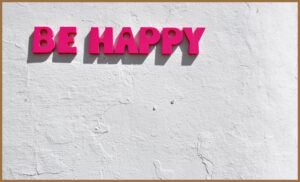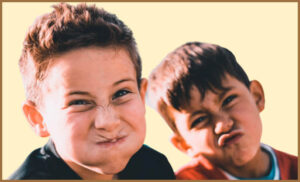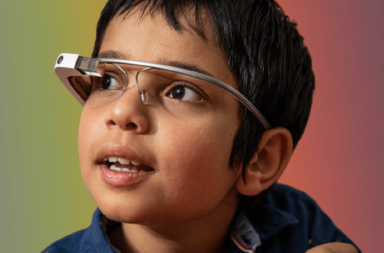Be it from a parent, teacher, sibling or spouse, one topic I often get emailed about is autism facial expressions. In particular, some want to know what the mysteries of an autistic facial expression might convey whilst, others, question whether their inability to read us means there’s nothing to read in the first place (rude).
To those in the know, this ignorance may seem offensive. However, I too sympathise with the struggles of being unable to read someone’s expression. This isn’t because of my understanding of the spectrum though, it’s because I am autistic myself; wherein the struggles of reading neurotypical facial expressions are just as tough.
In today’s article, I wanted to discuss exactly how and why autistic facial expressions differ from those not on the spectrum, as well as how your initial assumptions of autistic facial expressions may be wrong. I also wanted to discuss ways to support those where challenges with expression may cause challenges in communication and what everyone (both autistic and not) can do to reduce misunderstandings.

How Autistic Facial Expressions Differ
People with autism can and do emote differently. For example, what might first be seen as anxiety; teeth clenched, eyes wide open, might be a display of excitement, whilst looks of disgust as a response to something like flatulence might, well, actually that response is pretty universal (yes, this is something autism researchers have looked into, read more).
Like everything on the spectrum, these differences do range from being quite similar to being worlds apart. However, as more research is being done, evidence has grown to illustrate that the responses are consistent and far from random – suggesting somewhat of a secret autistic facial language.
As we are all learning in this new masked society, being unable to read someone’s face when they are speaking can feel like you are only getting half of a conversation and these differences, which autistic people have, can at times complicate communication.
As the video below demonstrates, these challenges can inadvertently strain our relationships, leading to confusion and a perceived lack of compassion, whilst vice versa we feel ignored, let down and, in many cases, in need of a whole new emotion to express: frustration.
How Our Understanding of Autistic Facial Expressions is Changing
You know how blood-boiling it can be when someone is minding their own business and some random jerk tells them to smile? Well, for a good course of autism history, autistic people have been that person on the street and researchers have been the jerk, labelling us as impaired for not reacting in a way they demand.
This is evident in that, when asked ‘How do autistic people display deficits in our expression?’, many will say we struggle with spontaneous responses, despite being able to replicate an emotion when asked. Yet, as a recent revolutionary study into autism and facial expression has found, this isn’t because autistic people struggle to convey emotion, but because there are two fundamental flaws in the way our responses are tested:
- Autistic people are often socially anxious. Therefore, if you sit us in a controlled room and tell us to act naturally, you are going to get anything but spontaneous.
- Autistic expressions have been judged on how we shape our faces similarly to others and not how the consistency of the faces demonstrate a stable response.
Put simply, this means that many will ignore the expressions autistic people present daily, instead expecting us to react in non-autistic ways because they may have seen us do so once before. Essentially, this is like asking someone to recite the entire French national anthem because you once heard them say ‘baguette’ and it can be quite crushing for our self-confidence.
Thankfully, this realisation seems to be becoming better understood in recent times; with diagnostic criteria beginning to reflect that language is a two-way street. Now, when an autistic person displays an expression which others don’t understand, the miscommunication is in part everyone’s responsibility and it’s up to us all to be part of the solution.

Possible Solutions to Support Autistic People with Expressions
Image cards:
The autistic mind realised long ago that the world is just better when it works on absolutes. Using image cards to indicate expression is a perfect example of this as, once a mutual understanding exists, there can be no confusion that someone is upset if either of them points to a card that displays a sad face.
Going down this route of expression doesn’t have to be quite so literal either as, for some, it might be easier to use connotations related to a person’s special interest when deciding on what will convey what. For example, if this was me, I would want to incorporate my love of Pokémon into the exercise; displaying a picture of Pikachu when I was happy and a picture of Team Rocket (the show’s main antagonist) when I’m distressed.
[Please note: if you do decide to pursue the latter method, make sure we are aware of the exact use of a picture before you put the system in place. Otherwise, you may run into circumstances where we inadvertently show the image associated with a happy thing, when we are sad, because we are saying we want to go to our happy place and not that we are there]
AACs:
For those who may struggle with motor function or may be of limited vocabulary, a device which can replace speech and communicate the intended expression is a sure-fire solution to handling this difference.
Known as an Augmentative and Alternative Communication (AAC), these mechanical wonders can clear up any chance of misunderstanding with a push of a button (literally) and, although some have a price tag bordering on the astronomical, there are now many cheaper alternatives which can be purchased as Apple/Android apps, such as Otsimo.
Listen:
Autistic people are nothing if not consistent. So, while our responses might not make sense to everyone, they do make sense to us. For this reason, you might want to consider how you can change your way of thinking before you try to change ours as, more often than not, acts of expression may be there but are being missed.
Examples of this could be how, when I get stressed, I run my thumb across my fingers or how, when many autistic people get excited, they flap their hands in an act known as ‘stimming’. Furthermore, in place of actual actions, many autistic people will have verbal responses that may hint at a bigger underlying issue, such as how, when I was younger, nervous and in desperate need of reassurance in this busy world, I would constantly ask ‘what is 1+1?’ ‘what is 2+2?’ and so on.
Whatever the autistic person’s indicator, it’s important to remember that we are there and looking to be understood. Therefore, while you could use image cards or AACs to bridge the gap between expression and understanding, with a little patience and attention you may realise that there was no gap to begin with, just a false perspective that made it seem so.

Carry on the Conversation
Thank you to Cook Lab for letting me steal share the incredible video featured in today’s article. If the use of similar clips is something you would like to see more of in future articles, then please let me know using the comments below. And, if you want to learn more about autism and emotions, then check out this post: Autism and Emotion Recognition: What is INTEROCEPTION?
As always, I can also be found on Twitter @AutismRevised, on Instagram @autisticandunapologetic and via my email: AutisticandUnapologetic@gmail.com.
If you like what you have seen on the site today, then show your support by liking the Autistic & Unapologetic Facebook page. Also, don’t forget to sign up to the Autistic & Unapologetic newsletter (found on the sidebar on laptops and underneath if you are reading this via mobile) where I share weekly updates as well as a fascinating fact I have found throughout the week.
Thank you for reading and I will see you next week for more thoughts from across the spectrum.


